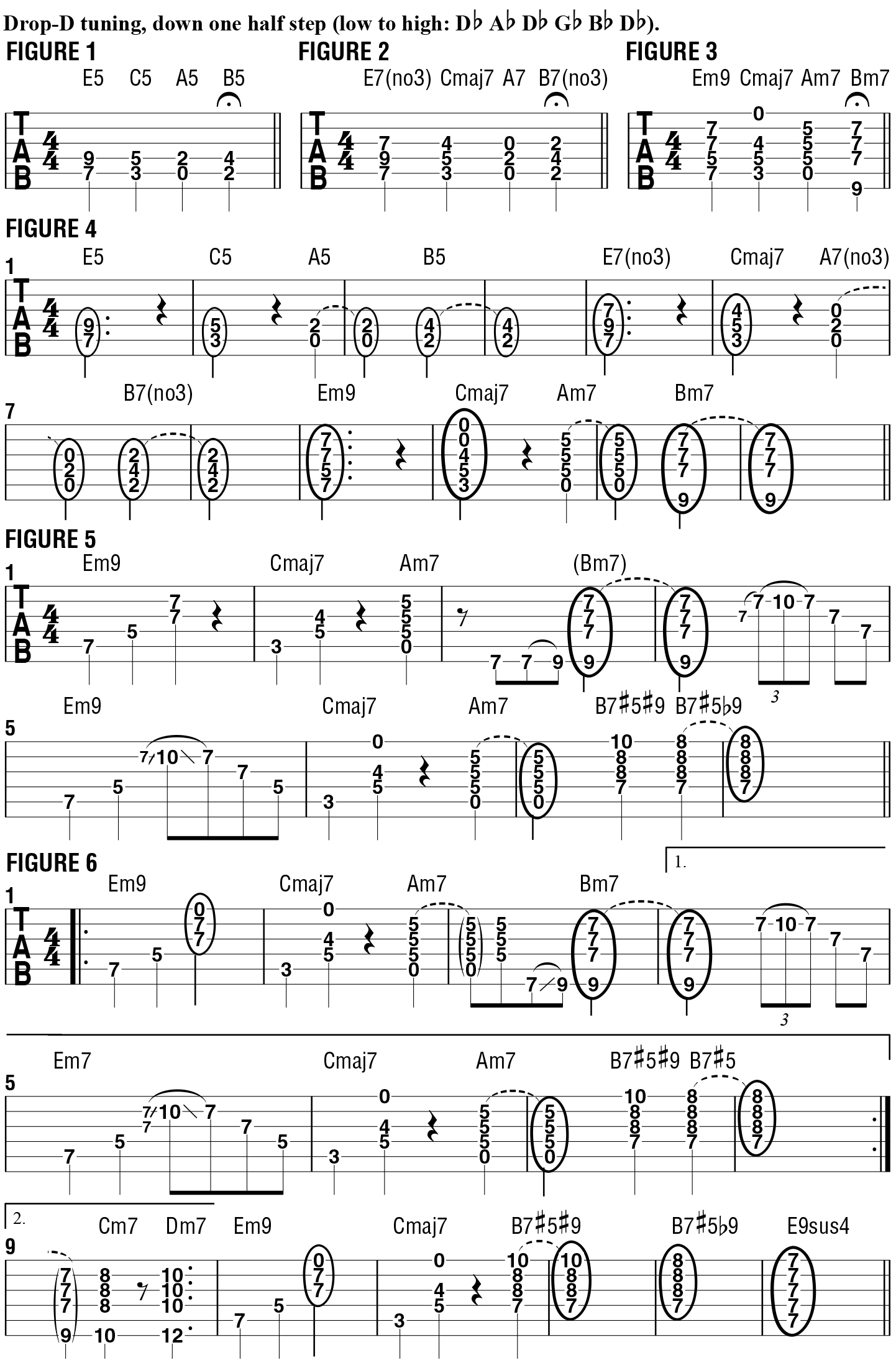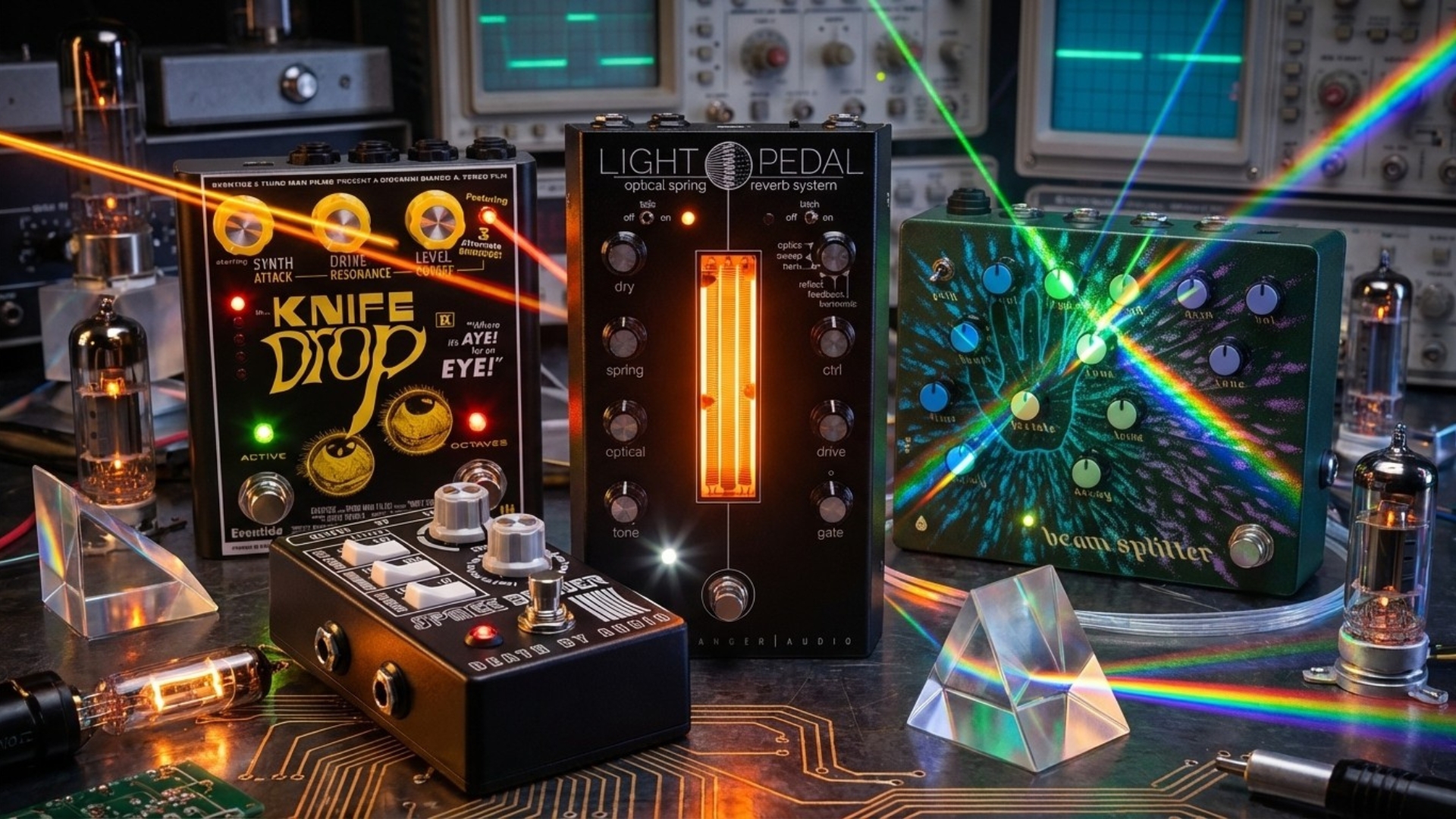Hi, and welcome to my new Guitar World column. Over the course of these lessons, I will be discussing many of the techniques and approaches I use in my guitar playing and songwriting. I’d like to start out by demonstrating a few ways one can take a simple chord progression and add a few unusual notes to the chords to make the music sound more modern and progressive. I started out listening to a lot of metal and punk, and from that, I was exposed to a lot of chord progressions based on root-fifth power chords. The sequence illustrated in FIGURE 1—E5 C5 A5 B5—is a good example.
Many guitar players think that, in order to play complicated music, you have to learn new, magical chord progressions that exist somewhere outside the foundation of the music that inspired you to pick up the guitar in the first place. But what makes modern progressive music interesting to me, and emotionally valid, is when you can hear the background of where the musician is coming from, as well as all of the stuff they’ve picked up.
My song “Selenium Forest” (hear it below) is a perfect example of what I’m talking about here. The root notes of the chords in the progression are E C A B. There are many ways one can color the chords in different ways to end up with a variety of musical results. The first incarnation was the pattern in FIGURE 1, built from two-note power chords.

For punk and metal, those chords are fine. I like to create more of a jazzy sound, so the first deviation involves adding the seventh to each of the chords, as shown in FIGURE 2: E7(no3) Cmaj7 A7(no3) B7(no3). Another deviation is to include the ninth, as in FIGURE 3: Em9 Cmaj9 Am7 Bm7. FIGURE 4 combines all of these approaches into one rhythm part.
The next layer would be to add a little embellishment to each chord. One of my favorite guitarists, and the first to influence me in terms of chordal embellishment, is Jimi Hendrix; I’m sure that is the case with everyone. In FIGURE 5, I approach the chords in different ways, using arpeggiation, as well as quick hammer-on licks and slides.
Now that you have the idea, the goal is to move through different approaches to each chord as the progression is played repeatedly. These days, it seems everyone has the attention span of about a bar and a half, so a good thing to do is to change the latter half of a chord pattern when it’s repeated, or change a couple of the embellishments inside it. This is shown in FIGURE 6: bars 1–8 are basically the same as the pattern shown in FIGURE 5, but in bars 9–14, I switch up the rhythmic syncopation and chord placement.
Now that you have the concept, take any simple chord progression and experiment with adding upper tensions, as well as arpeggiations and syncopations, to make it sound more intricate and unique.
All the latest guitar news, interviews, lessons, reviews, deals and more, direct to your inbox!
